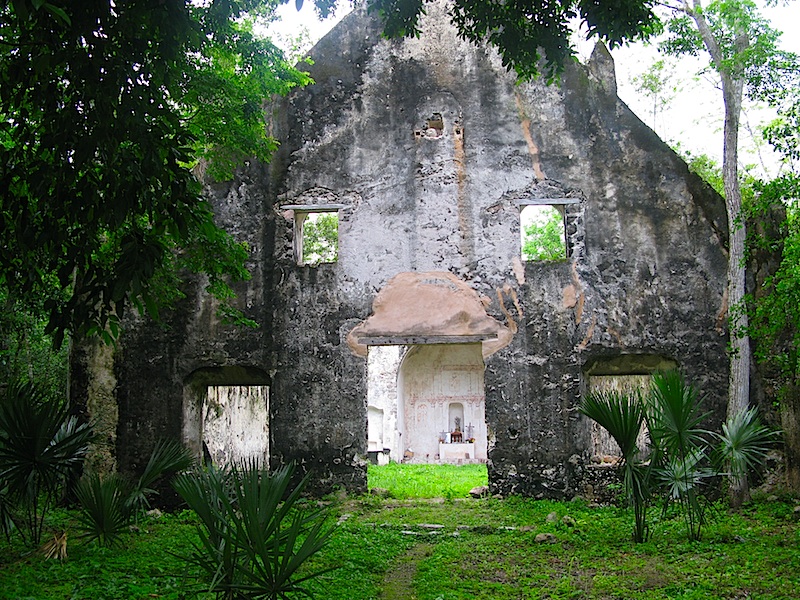Dr. Leventhal’s talk about heritage destruction in Iraq and Syria was full of sadness and a little bit of hope. But what really hit me was the postscript to the main body of the talk. Here we transitioned away from the Middle East and into the Yucatan Peninsula of Mexico. The project in progress here concerns a small Maya town called Tihosuco and their efforts to preserve and develop historical site related to the Maya Caste War.
When people think of the Maya, many assume straight off the bat that they are an extinct people. This is far from true, they are still alive and well throughout Central America. If you were to guess what they thought their heritage was, you would guess the ancient Maya, the builders of the great pyramids and Chichen Itza and Palenque.

Again this is far from true. When I went down to Tihosuco for a month, I quickly realized that the people in the town, all Maya, did not care one ounce for their ancient descendants. They recognized the actual blood connections, but did not put out effort to preserve ancient sites. Those sites do not represent who they are. Are they willing to make some money off of tourists who ogle at the stonework? Sure. But they do not feel that deep connection that we all feel for our heritage.
The Maya of Tihosuco, they told me, identify much more strongly with the more recent Maya that rebelled against Mexico in the 19th and 20th centuries. They were very proud of the job they had done protecting and hiding the sites out in the jungle. Multiple ranches and even a whole abandoned town are out in the jungle, maintained by the people of Tihosuco.

Part of the effort of the ongoing project is to further develop these sites into actual tourist destinations that visitors want to go to. This will also help to develop Tihosuco itself, which lives mostly in poverty. They key to this project though, and this was a major point of the talk, is to make sure that the power of representation and heritage, through museums, tours, and other things, stays in the control of the local people on the ground. It is critical that the government not appropriate the rebellion or its legacy for their own purposes, although they have already begun to try. The Mexican government has co-opted the ancient Maya for their own purposes, and we have seen the modern Maya willingly throw away that part of their heritage.
Another important point is to let people choose their own heritage and identity, don’t tell somebody who they are or where they have come from. This has come up in class discussions (In a good way!) about NAGPRA where we recognize that some native groups may not want their objects back for various reasons. We have to respect what parts of heritage people pick to save and remember, and what parts they do not want.
Sources:
Talking with the people in the town as well as my dad
Further Readings:




